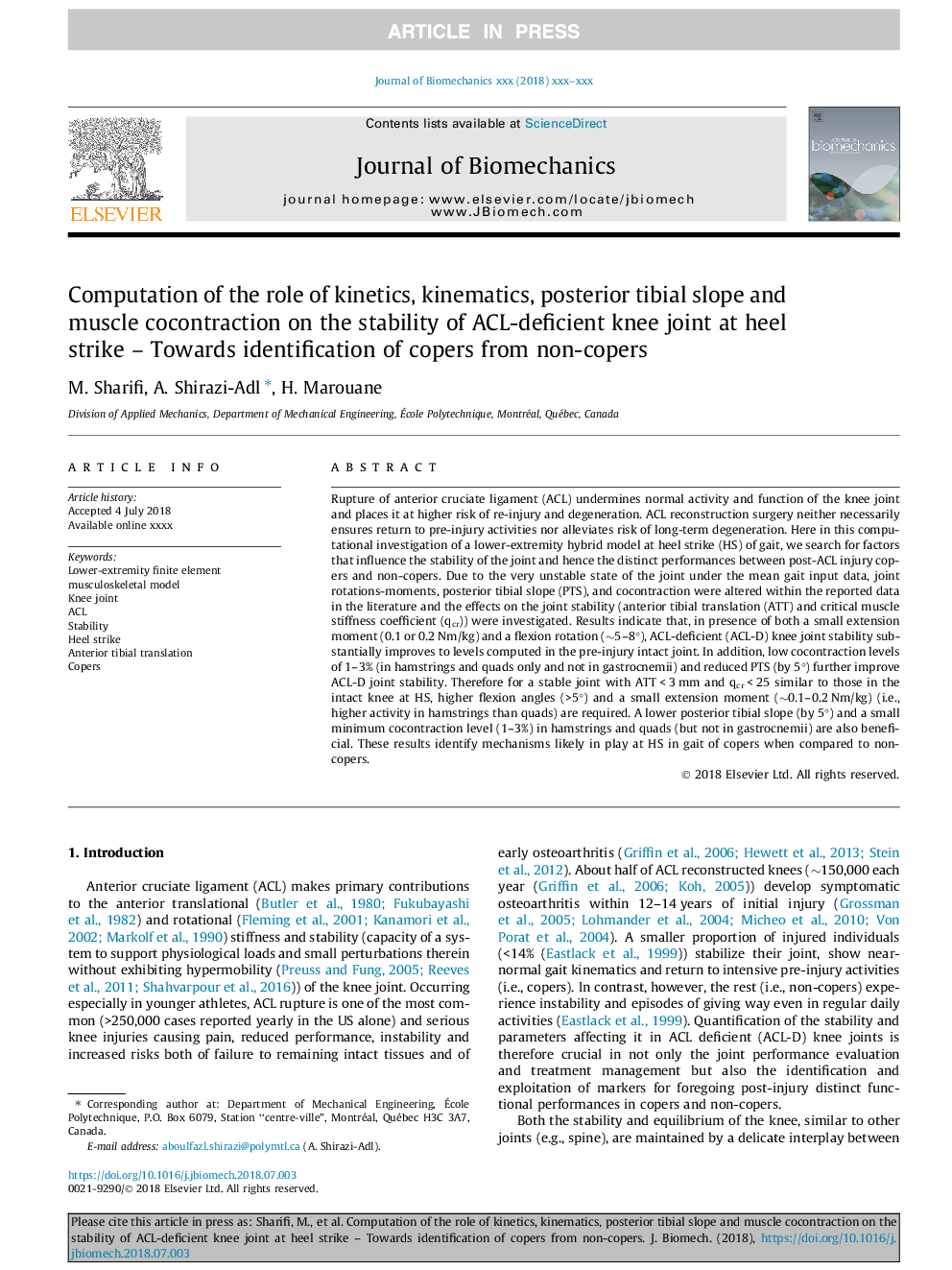| Article ID | Journal | Published Year | Pages | File Type |
|---|---|---|---|---|
| 7235641 | Journal of Biomechanics | 2018 | 12 Pages |
Abstract
Rupture of anterior cruciate ligament (ACL) undermines normal activity and function of the knee joint and places it at higher risk of re-injury and degeneration. ACL reconstruction surgery neither necessarily ensures return to pre-injury activities nor alleviates risk of long-term degeneration. Here in this computational investigation of a lower-extremity hybrid model at heel strike (HS) of gait, we search for factors that influence the stability of the joint and hence the distinct performances between post-ACL injury copers and non-copers. Due to the very unstable state of the joint under the mean gait input data, joint rotations-moments, posterior tibial slope (PTS), and cocontraction were altered within the reported data in the literature and the effects on the joint stability (anterior tibial translation (ATT) and critical muscle stiffness coefficient (qcr)) were investigated. Results indicate that, in presence of both a small extension moment (0.1 or 0.2 Nm/kg) and a flexion rotation (â¼5-8°), ACL-deficient (ACL-D) knee joint stability substantially improves to levels computed in the pre-injury intact joint. In addition, low cocontraction levels of 1-3% (in hamstrings and quads only and not in gastrocnemii) and reduced PTS (by 5°) further improve ACL-D joint stability. Therefore for a stable joint with ATTâ¯<â¯3â¯mm and qcrâ¯<â¯25 similar to those in the intact knee at HS, higher flexion angles (>5°) and a small extension moment (â¼0.1-0.2â¯Nm/kg) (i.e., higher activity in hamstrings than quads) are required. A lower posterior tibial slope (by 5°) and a small minimum cocontraction level (1-3%) in hamstrings and quads (but not in gastrocnemii) are also beneficial. These results identify mechanisms likely in play at HS in gait of copers when compared to non-copers.
Related Topics
Physical Sciences and Engineering
Engineering
Biomedical Engineering
Authors
M. Sharifi, A. Shirazi-Adl, H. Marouane,
